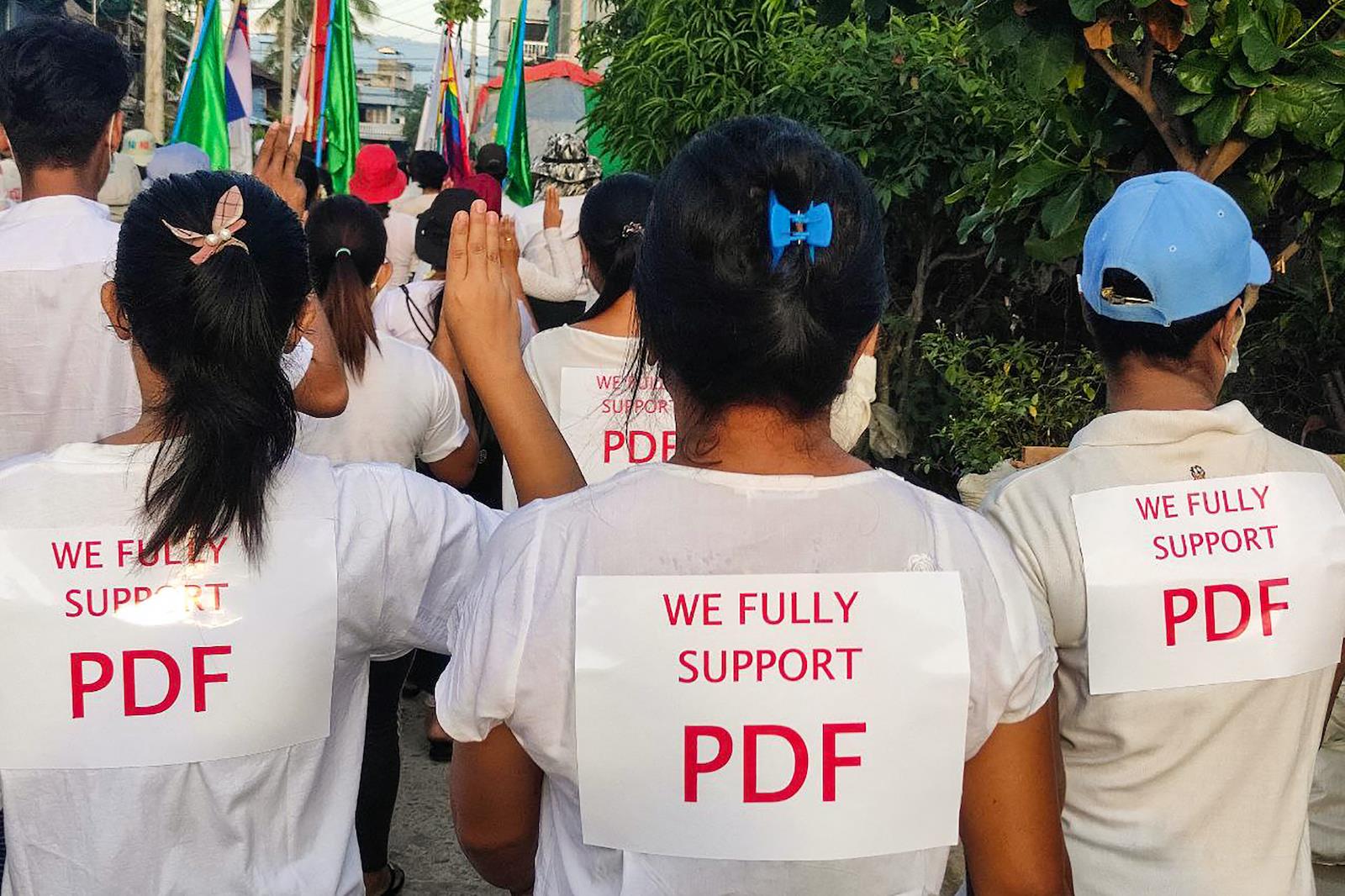(MENAFN- Asia Times) CHIANG MAI – When People's Defense Force (PDF) rebels launched a campaign of assassinations targeting military and affiliated officials, Myanmar's junta was initially caught unaware and highly vulnerable to the shadowy attacks.
Scores or more of junta affiliates were killed in the hit-and-run assaults, some targeting government facilities, others hitting officials while traveling or in public places, with the anti-military assailants often slipping away unidentified into the wilds of Myanmar's city streets.
The killings were key to the PDF's surprising early success against Myanmar's security forces, or Tatmadaw, which is better equipped for jungle combat than urban warfare. As the death toll rose, questions of cohesion hounded a coup regime that was wholly failing to protect its on-the-ground members.
But that's changed with the junta's recent provision and widespread installation of facial recognition security cameras in major urban centers, a surveillance eye that has deterred attacks and blunted one of the PDF's most effective tools in its David versus Goliath fight against the Tatmadaw's superior conventional forces.
And the junta has one country, in particular, to thank for that capacity: China.
While Beijing has tried to maintain a pretense of neutrality in Myanmar's raging civil war nominally pitting military versus pro-democracy forces, its decision to provide sophisticated surveillance tools to the coup regime shows it has clearly taken sides in a conflict that threatens to become a new great power proxy war theater.
To be sure, China has been open about its assistance to help build a“national portal” for Myanmar, one of the region's most laggard digital realms. On November 25, China Ambassador to Myanmar Chen Hai met military junta International Cooperation Minister Ko Ko Hlaing in Naypyitaw to affirm the two sides' pauk phaw, or brotherly, relations and promote the“restoration of peace and stability” in common border areas, among other cooperative initiatives.
What was not mentioned in the joint announcement, however, was that China has become the junta's chief supplier of cameras with facial recognition capabilities, making Beijing at least tacitly complicit in the identification, arrest and detention of PDF fighters and others opposed to the military regime's democracy-suspending rule.

Protesters wearing signs in support of People's Defense Forces (PDF) during a demonstration against the military coup in Dawei, May 10, 2021. Photo: Dawei Watch
Human Rights Watch warned in a report in March last year that the junta's“access to a new public camera system equipped with facial recognition and license plate recognition technology poses a serious threat to basic rights in the country” and that its improved surveillance abilities using artificial intelligence technologies are a concern“as the junta has increasingly used deadly force against protesters and others expressing opposing views.”
“Surveillance cameras pose a serious risk to (Myanmar's) democracy activists because the military and police can use them to track their movements, figure out connections between activists, identify safe houses and other gathering spots, and recognize and intercept cars and motorcycles used by activists,” HRW's deputy Asia director Phil Robertson said.
News agency Reuters identified three specific Chinese companies that have supplied such electronic systems to Myanmar's military regime: the Shenzhen-based technology giant Huawei Technologies, Zhejiang Dahua Technology in Hangzhou in Zhejiang province and hikvision , another partly state-owned company which also has its headquarters in Hangzhou.
Huawei and Dahua did not respond to Reuters' request for comment on the report while hikvision issued a statement saying that it had never sold any equipment“directly to Myanmar government authorities.” Hikvision also claimed that it had not provided Myanmar with facial recognition technology.
But Asia Times has learned from industry sources that Hikvision has used local Chinese and Myanmar middlemen to transfer such equipment to Myanmar's junta and that such indirect sales to Myanmar increased dramatically in 2022.
Some of the surveillance equipment has been stripped of visible branding in an apparent effort to obscure its maker and origin, the same sources say. The entities on the Myanmar side remain unknown, but Reuters suggests that two local procurement firms, Fisca Security & Communication and Naung Yoe Technologies Co, hold the tender to install the equipment from China.
Founded in 2014, Fisca Security & Communication is based in the Yangon township of Mayangone. The company's website shows it has links to several local technology companies and telecommunications firms.
Yangon-based Naung Yoe Technologies, meanwhile, identifies itself on LinkedIn as“a leading Security Surveillance Solutions, System Integration and Equipment provider” with“a solid reputation” and has become a“Top System Integrator of high technology applications and solutions since it was established in 2005 as a CCTV installer.”
Neither Fisca Security & Communication nor Naung Yoe Technologies responded to Reuters' requests for comment. Reuters reported that the junta was planning to install surveillance systems for cities in each of Myanmar's seven states and seven regions under the pretense of preserving peace and maintaining security.

Myanmar's Fisca Security and Communication provides CCTV services to a wide range of clients including the government. Image: Fisca Website
China's camera sales to the regime – and there seems to be no other sources for surveillance equipment being transferred to Myanmar at present – may serve Beijing's long-term strategic interests in the region, not least the expansion of its Belt and Road Initiative.
That includes the China-Myanmar Economic Corridor, a clutch of infrastructure projects including pipelines and railways designed to give China direct access to the Indian Ocean for its exports and a new route for energy imports from the Middle East by bypassing the congested Malacca Strait and the contested South China Sea – both maritime theaters where the US could seek to impede China's shipping in a conflict scenario.
China may have adopted a wait-and-see policy immediately after the February 1, 2021 coup, which was met with massive anti-military demonstrations in virtually every city, town and major village across the country. Protests were also held outside of the Chinese embassy in Yangon, with pro-democracy demonstrators calling on Beijing not to back the coup, while more radical elements launched arson attacks against several Chinese-invested factories.
But by June 2021, Chinese Foreign Minister Wang Yi visited Naypyitaw to declare Beijing's policy had not been“affected by changes to Myanmar's domestic and external situation.” That was a hard and politically expedient pivot considering Beijing's earlier engagement with Aung San Suu Kyi and her National League for Democracy (NLD)-led government, both toppled by the coup.
At the same time, China risks falling afoul of European Union (EU) and United Kingdom (UK) sanctions that bar the transfer of such surveillance equipment to Myanmar's military regime.
The London-based legal network Ashurst warns clients on its website that both EU and UK sanctions“contain restrictions on provision of military goods and technology, dual-use goods and technology, goods and technology which may be used for internal repression, and goods and services relating to monitoring and interception of telecommunications in Myanmar.”
More importantly, it says:“there are also restrictions on providing technical assistance, armed personnel, financial services or funds or associated brokering services to or for the benefit of the...the Myanmar army (or persons acting on its behalf or under its direction) where such provision relates to military activities, or otherwise enables or facilitates the conduct of armed hostilities, in Myanmar.”

A surveillance camera is seen in front of Huawei's logo outside its factory campus in Dongguan in China's Guangdong province on March 25, 2019. Photo: Agencies
That“or” would apply to Chinese companies that are now supplying Myanmar with surveillance equipment clearly meant to monitor and stifle opposition to military rule.
Only time will tell if China's supplied surveillance equipment will be enough to snuff out the PDF insurgents who continue to hound and hunt junta affiliates and officials in major cities across the country.
But what is clear is that China and its state-linked companies are playing with fire by so openly assisting the regime's repression of opposition forces widely backed by Myanmar's people and with the capacity – and now arguably motivation – to target China's many in-country investments and interests.